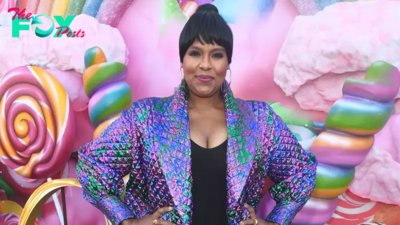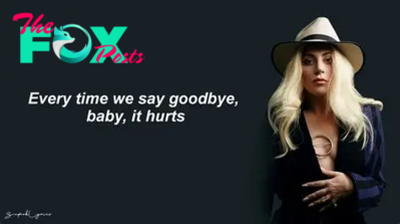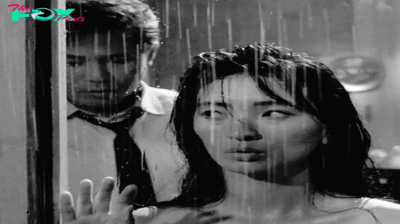Entertainment
How TV’s Biggest Winners Like Shōgun Leveraged Authenticity For Success
At the 76th Primetime Emmy Awards, FX’s Shōgun and The Bear emerged the top winners in their categories, proving once and all that authenticity is the key to success.
Key in the discussion of these shows’ successes — the notion that being genuine in one’s craft will always pay off. With viewers and critics alike lauding Shōgun for its dedication to authenticity, we take a deep dive into why television’s biggest winners have become the golden standard for world building and story crafting today.
Here’s an interesting, confusing conundrum about humanity’s relationship with cinema. We watch TV shows and movies to lose ourselves in the plot; we want to be engaged and removed from the real world, seeking the escapism provided to us by way of dramatic storylines, exquisite costuming, and sterling performances from our best-beloved actors.
And yet.
On the flip side, there is something inherently intriguing about art that imitates life. We want to identify with the characters we see on screen. Hand over hearts, we adopt our favourite characters with empathy and understanding, integrating them into our lives and adopting their troubles as our own. In this manner, we identify and commiserate, finding fragments of our own lived experiences within their narrated storylines.
It is when a perfect balance is struck between fictional and relatable that the true artistry of poetic cinema is revealed. Genuine storylines dripping with humanity are devoured whole by audiences hungry for more.
To wit: Shōgun, initially planned for a single season, has been renewed for a second and third season. But what do viewers of today share with Edo-period warlords? The truth, simply, is this: nothing, but also everything.
A success story in authenticity with Shōgun, Heeramandi, and more
When Hiroyuki Sanada first stepped onstage at the 76th Primetime Emmy Awards this past September to accept the award for Outstanding Drama Series, he wasn’t just making awards History with Shōgun — he was reclaiming his heritage on a global stage. Sanada, who both produced and starred in the feudal-era drama based on James Clavell’s 1975 novel of the same name, was a fundamental driving force in keeping the series accountable to its origins.
With an expansive budget of USD 250 million for 10 episodes, the series found incredible stewardship in Sanada’s hands. A veteran in the Japanese filMMAking industry, Sanada is no stranger to Samurai-themed movies, having starred in films and television productions such as The Twilight Samurai (2002), The Last Samurai (2003), Westworld (2007) and more. His distinctive and measured approach to Shōgun provided fresh perspective, particularly in Hollywood, where viewers had long grown accustomed to dated and cliche portrayals of Japanese culture.
The result?
A historically accurate, clinically executed portrayal of life in feudal-era Japan, replete with all the requisite costuming wins, exquisite surrounds, and architectural marvels. Beyond aesthetics, Sanada’s expert guidance proved pivotal to the success of the series in more ways than one. The actors spoke ancient Japanese, comparable to Shakespearean English; likewise, the team paid special care to the rituals and mannerisms that continue to pervade Japanese culture today, imbuing the series with an incomparable layer of authenticity that would not be possible with a traditional Hollywood executive at the helm.
One thread of thought pervades every scene, palpable within the masterful production of Shōgun: There is no doubt in one’s mind that the show was lovingly made by those who bear a deep respect for Japanese heritage. With verity suffusing every scene, the success of Shōgun is owed to the respectful handling of its source material, indicating that much research and thought had gone into its creation.
Shōgun’s success at the September 2024 Emmy Awards is a clear indication that viewers have shifted away from traditional Hollywood. But it isn’t the only drama series to have created a stir in recent days by being genuine.
Earlier this year, Bollywood luminary Sanjay Leela Bhansali’s limited series Heeramandi: The Diamond Bazaar made waves across the globe when it premiered on Netflix. Bhansali, who is well known for his no-holds-barred, maximalist productions — Hum Dil De Chuke Sanam (1999) and Devdas (2002), among others — did not disappoint. Leaning into his propensity for grandeur and beauty, Bhansali infused the eight-episode miniseries with his trademark touch, turning it into a cinematic masterpiece emblematic of the luxury and resplendence enjoyed by the tawaifs of 1940s British India.
While inspired by true events, Heeramandi’s storyline is largely fictional. Visually, however, the show paints a very vivid imagery of life in pre-independence Lahore. Adding onto the exquisitely built sets for which he is renowned, Bhansali reaffirmed his dedication to authenticity by commissioning over 10,000 pieces of Mughal jewellery from Vinay and Anshu Gupta at Shri Paramani Jewels. He then guided the three-year-long process from design to completion, ensuring the resultant splendour would reflect his vision of India.
Speaking to Harper’s Bazaar Arabia, Vinay Gupta shared, “The process was not only driven by design but also understanding History, going back into the era, and understanding each character in play.” He added, “When designing the pieces, every nuance was looked at, and the craftsmanship was aimed to achieve the intricacy of jewellery-making in that era.”
In all, the completed treasure hoard came up to 300 kilos in weight, an extraordinary showcase of Indian culture and heritage.
Just as Sanada banked on authenticity to guarantee the success of Shōgun, so too did Bhansali safeguard Heeramandi’s triumph. The show went on to become the most-watched Bollywood production on Netflix, garnering 4.5 million views on its debut week. It also became the second most-watched non-English series and trended in 43 countries.
In June, following its global success, Heeramandi: The Diamond Bazaar was renewed for a second season.
The Bear: When television feels real
Setting aside historical and cultural accuracy, viewers have also been drawn to authentic portrayals of human nature. Gone are the days of the infallible superhero. As humanity continues to grow beyond the fledgling stages of acceptance for imperfections, television has introduced a brand-new host of characters to identify with, and root for.
Imperfections have become the currency of character creation and world building, with flawed leads becoming the norm. In The Bear, which does not shy away from the grittier aspects of humanity, authenticity manifests in the very real, and very human flaws that haunt the footsteps of each character.
Depressed and in denial, Carmen ‘Carmy’ Berzatto (portrayed by Jeremy Allen White) grapples with obsession. Plagued by scenes from an unhappy childhood and a tumultuous relationship with her mother, Natalie ‘Sugar’ Berzatto (portrayed by Abby Elliott) struggles on the brink of motherhood. Richard Richie’ Jerimovich (Ebon Moss-Bachrach) flounders to find his purpose. Tina Marrero (Liza Colón-Zayas) attempts to find her place in a world that appears to have left her behind.
And in each and every one of these characters, we see ourselves and our struggles manifest. Insofar as The Bear is concerned, authenticity lies in storylines that reflect the world as we live in it today. One could even argue that this is The Bear’s strongest suit — not discounting the fact that White engaged method acting by attending cooking school and training at Michelin-starred restaurants to prepare for the role.
But oh, how we ate it all up.
How are audiences trending towards authenticity?
So why have we, as an audience, trended in this direction? The subject of representation is not a new notion in Hollywood; far from it, in fact. With conversations surrounding representation for humanity’s many distinctions having suffused Hollywood for decades now, it was only in recent years that we began seeing the fruits of our forebears’ labours.
The current iteration of diversity began with Marvel’s Black Panther, a masterpiece that depicted the fictional Wakandans — of African heritage — as a technologically driven, forward thinking people, eschewing Western media’s typical portrayal of the same.
But, while it is fact that audiences want to see diversity on their screens, diversity for diversity’s sake alone has largely proven ineffectual in garnering success. Take, for example, Jada Pinkett Smith’s historical Netflix documentary Queen Cleopatra (2023), which featured black actress Adele James in the titular role of the iconic Egyptian royal. Of note: Cleopatra is widely regarded by scholars as having Macedonian Greek ancestry.
The bulk of historians overwhelmingly support this claim, with even Egypt suing Netflix to dispute the show’s depiction of their ancient queen. On Rotten Tomatoes, the series received a dismal score of 18 percent; it was likewise rubbished on IMDb, where it received a score of 1.2/10.
In short: Gone are the days of representation for representation’s sake, where filMMAkers relied on token characters to widen their berth for appealing to diverse audiences. In the case of Bridgerton, an incredibly diverse cast of characters come together to realise the Shondaland vision of diversity; and it largely succeeds, relying not on the tokenism of casting non-white actors, but on the quality of its storytelling and its heavy reliance on ‘aspirational accuracy’. Much like Shōgun and Heeramandi, Bridgerton’s decisiveness in casting inclusively feels genuine — an honest endeavour towards progressiveness as opposed to a transparent attempt to labelled as such.
If Shōgun’s groundbreaking success at the Emmy awards are anything to go by, it is that authenticity will never go out of style. And in the ever-turning Hollywood hamster wheel of content, showrunners and producers would do well to look to these peers for inspiration.
Shōgun and The Bear are now streaming on Disney+ Hotstar.
Heeramandi: The Diamond Bazaar is streaming on Netflix.
(Main and featured image: FX)
-

 Entertainment18m ago
Entertainment18m agoNatasha Rothwell on Her Memorable Firsts
-

 Entertainment18h ago
Entertainment18h agoPopular Hudson Valley Italian Restaurant Addresses Closing Rumors
-

 Entertainment18h ago
Entertainment18h agoRHOBH’s Dorit Kemsley Addresses Viral Smoking Scene on Season 14 Premiere: ‘I Was Being Chased’
-

 Entertainment22h ago
Entertainment22h agoThe 10 Best Podcasts of 2024
-

 Entertainment1d ago
Entertainment1d ago‘RHOBH’ Star Dorit Kemsley Opens Up About Crumbling Marriage to PK: ‘Agreed to Separate’
-

 Entertainment1d ago
Entertainment1d agoAmerica On CoffeeWe’re simply inviting you to take a timeout into the rhythmic ambiance of our breakfast, brunch and/or espresso choices. We’re completely satisfied everytime you cease by.“BLONDIE – RAPTURE”
-

 Entertainment1d ago
Entertainment1d agoAn Important Information to Navigating the Casting Course of
-

 Entertainment1d ago
Entertainment1d agoAmerica On CoffeeWe’re simply inviting you to take a timeout into the rhythmic ambiance of our breakfast, brunch and/or espresso alternatives. We’re comfortable everytime you cease by.“At all times Bear in mind Us This Means” Girl Gaga































